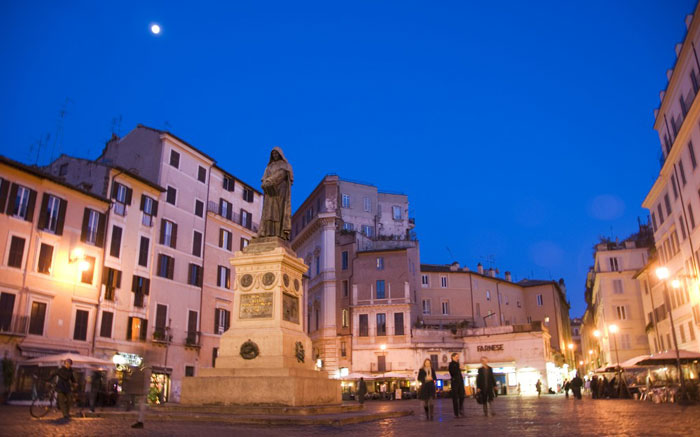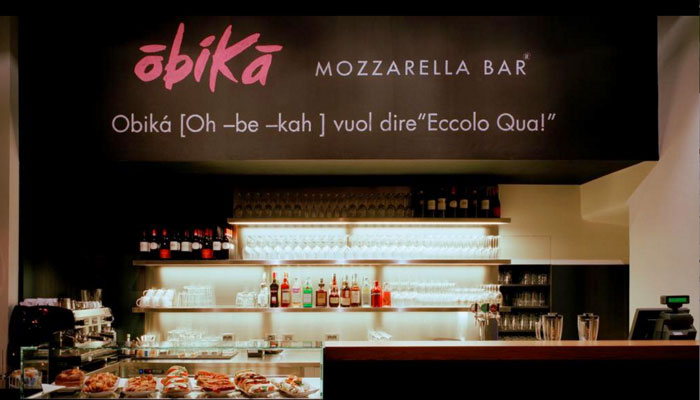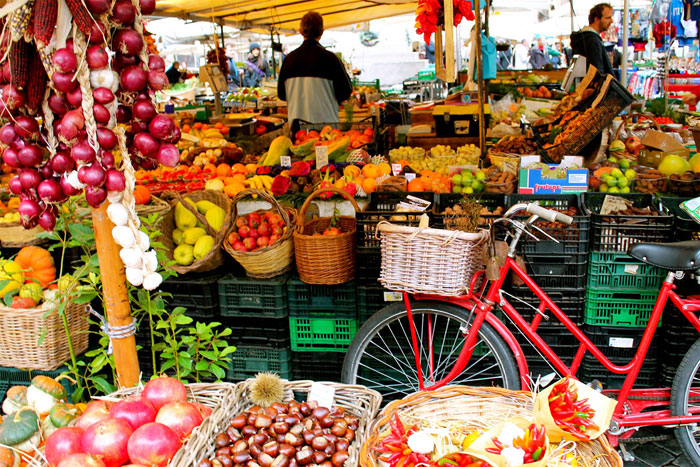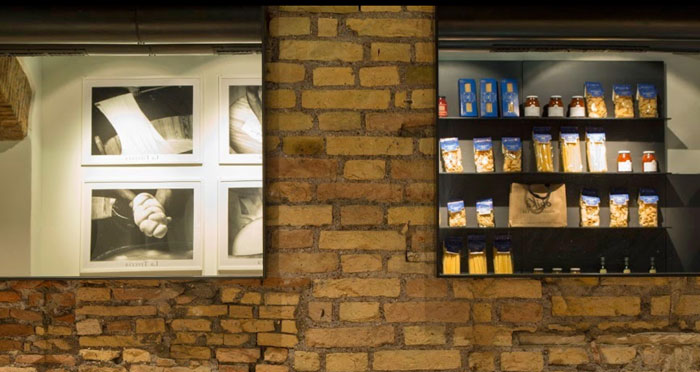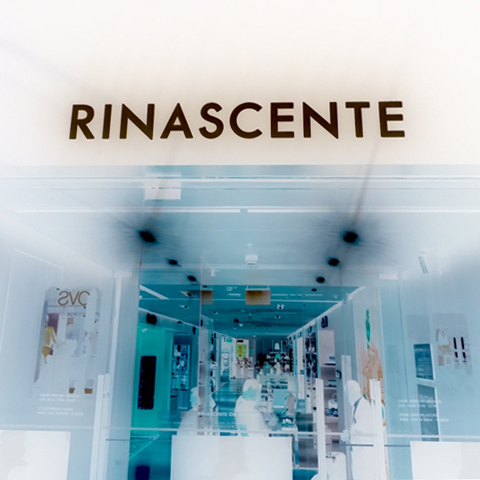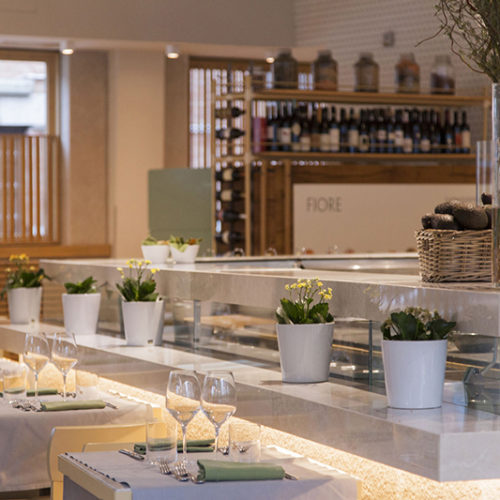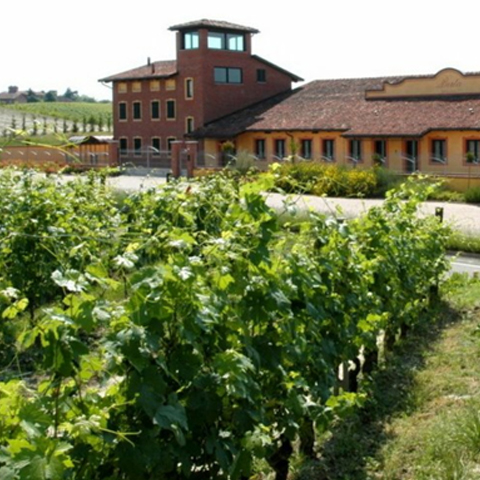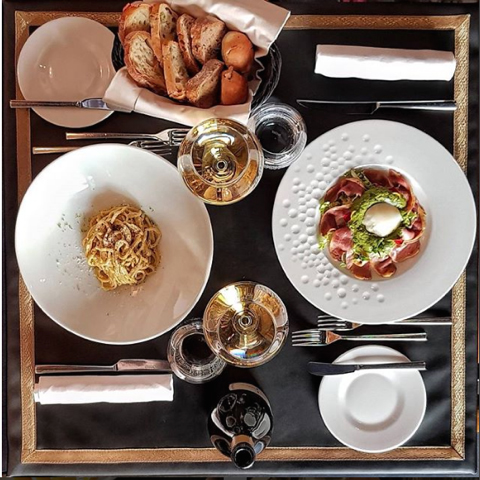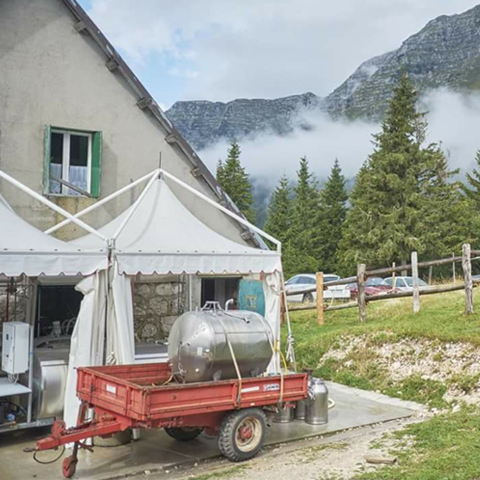Campo dei Fiori, the small square located near Piazza Navona, has gone through more than a few transformations. The name, which literally translates as “field of flowers”, was given to the area in the Middle Ages because it was just that: a field which lay undeveloped until the 15th century, possibly because of its vicinity to the flood-prone Tiber River. Since then, the area developed a reputation for commercial ventures. The area’s streets are named after various ancient trades such as Via dei Balestrari – crossbow-makers, and Via dei Baullari – coffer-makers.
The piazza was even a venue for public executions. The iron statue at its center, with the imposing, hooded figure, honors the philosopher Giordano Bruno who was burned in the square for heresy but eventually honored for his contribution to freedom of thought.
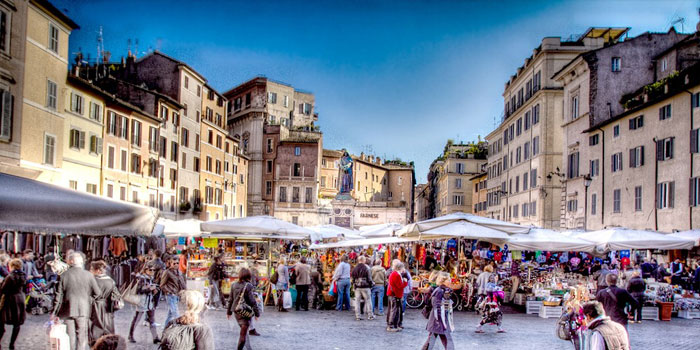
Since the turn of this millennium, the area has gone from being one of the most dangerous parts of Rome to a growing tourist attraction. Most days, if you stay long enough, you’ll see the square go through a metamorphosis from morning to evening. The first visitors to Campo dei Fiori will find the square filled with the stalls of an open-air market. Where there once was an ancient horse market, now you can find colorful and pungent spices, fruits and vegetables, books, household items, and other curiosities. After midday, the stalls are taken down, and tourists and Roman’s alike casually stroll across the stones and eat lunch at the surrounding restaurants. As night falls, a younger crowd tends to dominate, many of them native Romans who hang out under the imposing iron statue at the piazza’s center. Later in the evening the tourists are out again; as the restaurants on the square, with their ample outdoor searing; have become quite popular eating and drinking destinations.
One of these restaurants is known to serve some of the best mozzarella in all of Rome. The New York Times called the eatery “Rome’s, and probably history’s first Mozzarella Bar”. The name of the restaurant, Obicà, is a word from the Naples dialect meaning “here it is”, an apt description. The restaurant’s kitchen was modeled in the classic sushi bar style, intentionally designed to allow guests to watch the food being made. But the name can also be a reference to the freshness of their products, especially the bufala mozzarella, a delicacy originating from southern Italy.
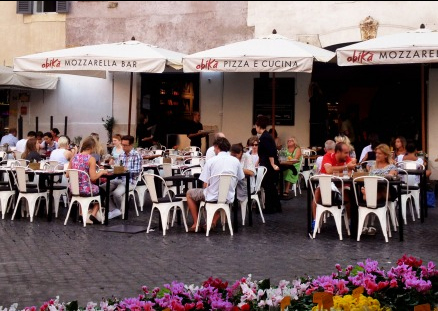 I joined a group of friends for a Friday evening aperitivo. The place was packed and the only table that would accommodate our party was inside; but thanks to the negotiation skills of one of my friends and the accommodating spirit of the servers and management, we were able to make something work outside. There are clear positives to sitting outside as long as you’re ok with being continually approached by roving flower merchants. It’s a phenomenon that I find curious and even endearing at times, so I’ll always take the outdoor table.
I joined a group of friends for a Friday evening aperitivo. The place was packed and the only table that would accommodate our party was inside; but thanks to the negotiation skills of one of my friends and the accommodating spirit of the servers and management, we were able to make something work outside. There are clear positives to sitting outside as long as you’re ok with being continually approached by roving flower merchants. It’s a phenomenon that I find curious and even endearing at times, so I’ll always take the outdoor table.
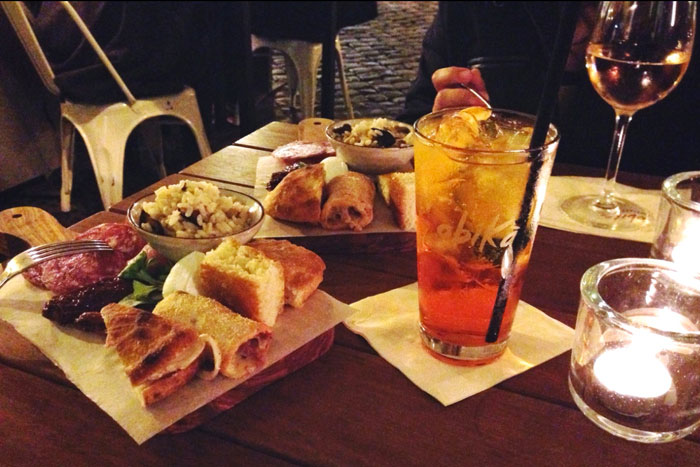
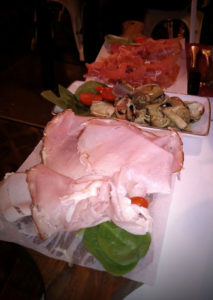 We ordered a fantastic red wine and a tasting of meats and cheeses with a few other savory items. There were three types of mozzarella to try: Delicata (delicate taste), Intensa (intense taste) and Ricotta di Buffala (bite-sized). It is important to point out that the names of these mozzarellas might be somewhat misleading. The group was in agreement that the mozzarella was quite good but that the main discernible difference between them was not as much taste as it was texture. The Intensa was the firmest of the three. The Delicata was slightly softer and the bite-sized buffala was the creamiest. If you’re already familiar with Mozzarrella di Bufala and know that is quite creamy and almost l
We ordered a fantastic red wine and a tasting of meats and cheeses with a few other savory items. There were three types of mozzarella to try: Delicata (delicate taste), Intensa (intense taste) and Ricotta di Buffala (bite-sized). It is important to point out that the names of these mozzarellas might be somewhat misleading. The group was in agreement that the mozzarella was quite good but that the main discernible difference between them was not as much taste as it was texture. The Intensa was the firmest of the three. The Delicata was slightly softer and the bite-sized buffala was the creamiest. If you’re already familiar with Mozzarrella di Bufala and know that is quite creamy and almost l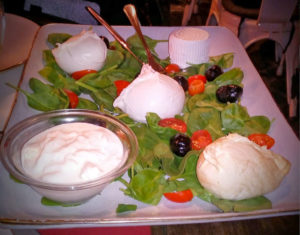 iquid, the smaller bite-sized Ricotta di Bufala will be what you’re expecting and definitely worth trying.
iquid, the smaller bite-sized Ricotta di Bufala will be what you’re expecting and definitely worth trying.
While Obicà has quite a few locations around Italy, along with some locations in the US, they remain committed to the slow food tradition. It is said that the restaurant’s head chef and CEO can be seen wandering the local markets, talking with farmers about their growing methods and sampling products. While all restaurants these days want to seem environmentally friendly and authentic, with Obicà it is more than just talk. They have been awarded two out of three stars by the Green Restaurant Association.
Spend enough time in Rome and you can’t miss the fact that the city and its culture are made of uncountable layers of history and tradition, all pressed together until their boundaries are almost completely dissolved, like the faint ribbons of mineral in igneous rock. Campo dei Fiori’s statue of Bruno stands as a reminder; not only of a time when free thought was punishable by death, but when public executions were the norm. Now Bruno serves as a point around which tourists and Romans gather to laugh and enjoy peaceful Roman evenings, free to say and think whatever they want, while enjoying good food, wine and; in the case of Obicà; delectable handmade mozzarella.
Obicà – Campo dei Fiori
Hours: 7:30 am to 2:30 am Monday through Sunday
Piazza Campo de’ Fiori, 16, 00186 Roma, Italy
tel. +39 06 6880 2366
http://obica.com/portal/IT/it/home/
